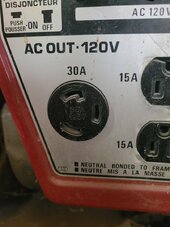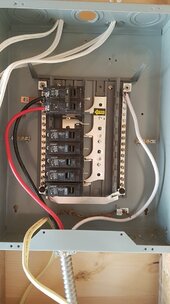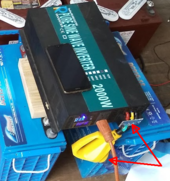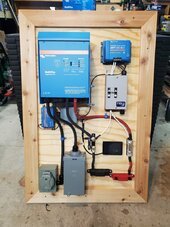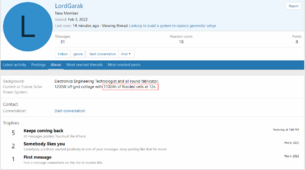Pictures would help ... take a picture of the circuit-breaker box where the gen cord plugs in, and try to get the manufacturer nameplate in some of the pics. Take a pic of the generator, or give us the exact model. Take a pic of the cord coming out of the gen, and another where it plugs into the panel. I think you have something like a Reliance Controls panel with a gen plug and extra circuits for house wiring, but the pics would help identify things.
So, what I think you want is possible, if not a clean, done-right-from-the-start electical approach ... the GEN is your current power source, and the HOUSE PANEL takes a feed from some power source (currently the GEN).
If it is indeed a reliance-like box, you could unplug the GEN from that panel's SOCKET (hereafter called AC POWER IN), and plug in an INVERTER's AC OUT power cord (custom cord) into the panel's now empty AC power in socket.
Carefully choose and install your solar gear, as your inverter would need to have an AC-out wiring block connection, and you'd need a custom cord to go from that wiring block to the reliance-like box's (the HOUSE PANEL) gen plug. Whatever power was put out by the inverter (let's say 15-amp or 20-amp) thru that wiring block, that's all the power you would have to the panel, and any electrical devices beyond in your house), whereas the gen might be putting out more power.
In this fashion, you'd only have EITHER the GEN plugged into the panel (power source #2), or the INVERTER (power source #1), but never both at the same time. You'd be in the business of plugging/unplugging, depending on which thing is your power source.
Once your solar gear is in place, and feeding the HOUSE WIRING system thru the PANEL, you can still make use of the gen as a separate backup power source:
- assuming the gen is not an inverter-gen (low-THD), but is an open-frame (higher-THD) model? Put a battery-bank battery charger in place, fed by the GEN, and tied to your battery-bank. If solar panels are blocked, or battery-bank running low, then switch on gen and battery charger. There's other options if your GEN is an inverter-gen.
- leave in place the option of unplugging the INVERTER cord, and plugging back in the GEN cord, as this gives you more fallback capability, if anything goes wrong with solar gear.
If you can't picture all of this in your head, or I lost you with some or all of the above, it could be time to call an electrician type of person ...
Again, pics would be a good start in getting help from us as to your options and possible directions, but it will still take someone like an electrician to get it done right, and safely, for you!
Hope this helps ...



